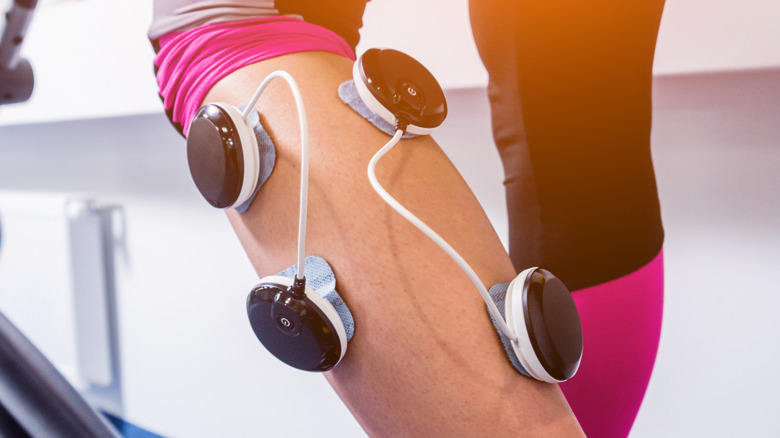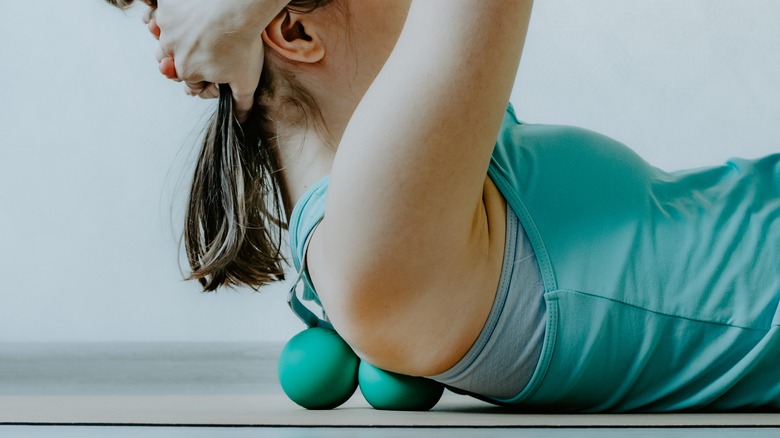How To Get Rid Of Knots In Your Muscles
After a long day of sitting at your desk, you sit back and notice a nagging pain in your shoulders. You wince as you reach for the spot, and notice there's a marble-sized knot there. These muscle knots are called myofascial trigger points (via The Conversation). When your muscles are held for a long time, endure repetitive movement (like running), or encounter different movements, inflammation finds its way into the muscles and connective tissues, called fascia. This inflammation can be painful, and it's the body's way of warning you that a part of your body isn't relaxing.
Sometimes, myofascial trigger points in your upper back can result in a headache (via University of Wisconsin Health). Muscle knots can also form if you are dehydrated, eat a poor diet, or experiencing chronic stress (Healthline). Although muscle knots aren't typically harmful, they can literally be a pain in your neck. Most muscle knots take a week or two to unwind, but there are a few remedies that can ease the pain.
What your physical therapist can do for muscle knots
A physical therapist could relieve your muscle knots through dry needling. According to Mayo Clinic, dry needling involves inserting tiny needles into your affected area to relieve the pressure. It might sound like acupuncture, but dry needling directly addresses the muscle tissue, whereas acupuncture needles are inserted along specific meridian points to affect the body. Your physical therapist must be certified in dry needling before performing this procedure.
Your physical therapist might also use electrical stimulation to address your muscle knots. According to Healthline, this therapy will send electric pulses to create contractions in your muscles and flush out inflammation. Some electrical therapies can send signals to the nerves to relieve pain and release endorphins. Be sure to consult your doctor or physical therapist if you purchase a home electrical stimulator. Electronic muscle stimulators are regulated by the Food and Drug Administration because they are sometimes sold to consumers for unwarranted claims of weight loss or strength training.
Try these home remedies for muscle knots
Although a massage therapist can perform myofascial release on your muscle knots, you can also iron out some of those minor knots using a few tools. According to the University of Washington Medicine, a foam roller can relieve knots along the outside of your leg, which is common among runners. A myofascial ball, which is the size of a tennis ball, can also roll over tender spots in your calves or shoulders. The National Academy of Sports Medicine suggests rolling one of these tools until you find a tender spot, then hold for 30 to 90 seconds.
Stretching can also relieve muscle knots. Rather than stretching as far as you can, the University of Wisconsin Health suggests stretching only part of the way, enough so you feel a little tug of the muscles and tendons, and hold this slight stretch for 3 to 5 minutes. This practice is typically done in yin yoga practices, which allow the connective tissues around the muscles to stretch (via Healthline).



